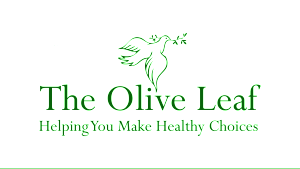With recent news of the EpiPen increasing to approximately $600.00 per year, allergies are in the headlines. According to research allergies affect as many as 30 percent of adults and 40 percent of children. Allergic disease, including asthma, is the fifth leading chronic disease in the U.S. in people of all ages. Allergies not only disrupt our lives, but ultimately keep our immune system in a state of constant hyperactivity.
Allergies and Stress
I personally feel allergies and stress or deeply connected. I remember the day I visited my veterinary friend’s practice and fell deeply in love with the clinic kitty “Smokey”. He was a beautiful silver grey cat and if he had been human, he definitely would have been a handsome underwear model! He looked at me and I was his. This day he adopted me and I took him home.

By the time I got him into my house, my eyes were swollen and I could hardly see…sadly I had to bring him back to the office. Several weeks later, I am visiting my friend and there he is again…this time he would not take his eyes off of me and I could not resist trying to take him home once again. To my surprise, I had absolutely no reaction to him the second time. Now over the past 7 years I occasionally have a flare up but it soon dissipates. So what happened?
“Allergies” are the immune system overreacting to benign substances. Individuals who suffer from allergies do so as a result of a genetic susceptibility combined with nutritional and environmental influences. Our bodies are exposed to so many internal and external chemicals each year. They come in the form of air pollution, pesticides, toxic household cleaners, and industrial contaminants. It is not surprising that at times our immune system is overwhelmed and confused by this toxic load. Epidemiological studies have shown that all types of allergic diseases are more common in polluted than in unpolluted areas. So the fact I was allergic to Smokey at one time and not at another confirms that my body was in a state of stress and could not handle one more stressor at that point.
What does one do?
From a naturopathic viewpoint, decreasing exposure to the cause is the first step to treating allergies and asthma. The next step is identifying any and all food sensitivities. Most people have some food sensitivities, and when we decrease the immune reactivity in one area of the body, it helps decrease in other areas as well. This basically says that any decrease in the overall allergenic load will decrease full body symptom expression. Since we can control what we put in our mouths, this is the first place to start after removing evident toxic chemicals from our foods. A great book to read regarding chemicals in our food is the Dorito Effect By Mark Schatzker. This book has a very cool cover of floating Doritos which will grab your attention.
Our goal through nutrition is to decrease histamine, decrease inflammation, and increase anti-allergic substances in our diet. Foods high in histamine which should be avoided are cheese, some wines, and certain kinds of fish such as tuna and mackerel.
Foods that should be included in your diet are anti-oxidant rich foods and essential fatty acids. Anti-oxidants are high in green, red and yellow vegetables, sunflower seeds, wheat germ oil, and Brazil nuts. Essential fatty acids are present in flaxseed oil, borage oil, evening primrose oil, grass fed animals, and cold water fish. Onion and garlic are particularly antiallergenic because they inhibit inflammatory enzymes. Of course even healthy foods can sometimes cause a food intolerance. Therefore it is good to give your body a break from these foods for a certain time to allow a “rest” period from specific foods which show up on an allergy test.
Services
The Olive Leaf provides several avenues for eliminating inflammatory foods and chemicals…
- Food sensitivity testing such as Alcat or Alletess will specifically tell you what foods and chemicals should be eradicated from your diet for a period of time and reintroduced in a rotational diet.
- The blood type/genotype program is not a food sensitivity panel. Howevert it does show foods that cause inflammation in the body in relation to certain lectins within each food group.
- Shaped Reclaimed Program consists of only anti-inflammatory food choices and a dietary guideline to follow to decrease inflammation in the body.
- Detoxification programs that eliminate foods and strengthen the liver which in turn help isolate food intolerances.
If you are interested in any of these programs, please schedule a consultation and we will be happy to discuss the best option for you or your loved one.



